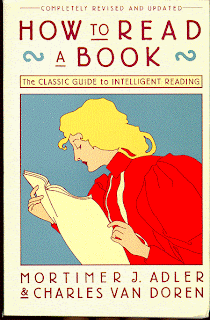Here is a routine exchange from my chemistry classes:
Student: Dr. H, can
you go over problem 38? It’s a really
hard one.
Me: Sure. Let’s take a look.
I flip to the back of the chapter and find the problem in
question. It is towards the end of the problem
set which generally correlates with increased difficulty, at least as
perceived by students.
I begin by reading the problem aloud, occasionally making
some notes on the board, pausing to give each phrase and detail a few seconds
to sink in, and when I am done I ask, “So
what do you think? Where should we
start?”
Student: Wait a
minute. Isn’t that pretty much like like the problem
we solved in class on Tuesday? Couldn’t we solve it the same way?
Me: Yup. Let’s go ahead and try that.
So we set up the problem, maybe wrestle a little with the
math and when we are done, the student says, "That wasn’t as hard as I thought it was.”
This scenario has been replayed frequently, with almost no variation, in every
chemistry class I have ever taught, from the introductory to the most
advanced classes. Typically, students
think that it is the chemistry and math that are difficult when in fact, the
problem is often just reading. These
kids are not bad readers; I suspect that they read non-technical texts very
fluently. They just haven’t mastered the skill of reading dense, rigorously
precise scientific writing. When
I help them parse the information and extract the key points, they frequently
know exactly how to take the next step.
I am reading a book called, oddly enough, “How to Read a
Book” by Mortimer Adler and Charles Van Doren.
The title amuses me because if I really needed to learn how to read a
book, I couldn’t learn to read a book by reading a book called “How to Read a
Book.” (Ok, I admit that little bit of wordplay was a bit self-indulgent. In truth, if I really needed to learn how to
read a book, I couldn’t learn to read a book by reading ANY book, not just that
one.)
Anyway, Adler and Van Doren make the point that we stop
teaching kids to read in sixth grade which is when most students can read narratives
fairly fluently, can extract the meaning of unfamiliar words from context and
can obtain information from straight-forward texts. Adler and VanDoren argue that
we don’t teach high school students to read complex texts analytically for
understanding. Yet, authors of college
level textbooks expect them to do just that.
In arguing for better reading instruction, Adler and Van Doren write
“We must become more than a nation of functional
literates. We must become a nation of
truly competent readers, recognizing all that the word competent implies. Nothing less will satisfy the needs of the
world that is coming.”
A pretty serious indictment of education, if you ask
me. Interestingly, this book was first
published in 1942 and re-released 30 years later. We certainly aren’t doing a very good job
today, and I guess it wasn’t that much better back in the good old days.
I do think Adler and VanDoren are correct and agree that it
is important to teach students to approach different kinds of texts
differently. Reading a physical chemistry
book is just not the same as reading a novel, which is different still from a
historical treatise or an epic poem. The
same book can be read differently for different purposes. Reading is not a single skill and people can
be very good at reading some kinds of books, but lack the skills to effectively read other kinds.
I have been enjoying “How to Read a Book” and have found it very useful. I have gained a few new skills and attitudes towards reading and best of all, I am better prepared to help students develop their analytical reading skills in my science classes.
After all, they pay hundreds of dollars for those books—they
should be able to use them.
Maybe textbooks should come with instruction manuals. Instruction manuals that DON'T need their own instruction manuals.
 |
| Yes, so many books. So little time. |
At the end of “How to Read a Book,” Adler and Van Doren provide a chronological list of books by 137 authors that they feel are worth the effort of close and detailed reading. This is a daunting list that begins with Homer, ends with Solzhenitsyn and includes multiple books by most of those 137 authors. They are
up to author number 22 before they even get to the Common Era! I think of
myself as being a little more than a “functional literate” but I haven’t read all
that many of their recommendations. Still,
I don’t think I’ll take on their list anytime soon. I am at a conference, and
today alone, I heard about six or eight books I really want to read. Plus my own backlog. Maybe I’ll get to Homer when I retire. At that rate, I should get to Solzhenitsyn
about the same time that I get to the Pearly Gates! Good thing the last edition of “How to Read a
Book” was published 30 years ago; otherwise the list would never end.
In fact the list of great books will never end and for that richness of human expression I am indeed grateful!

No comments:
Post a Comment